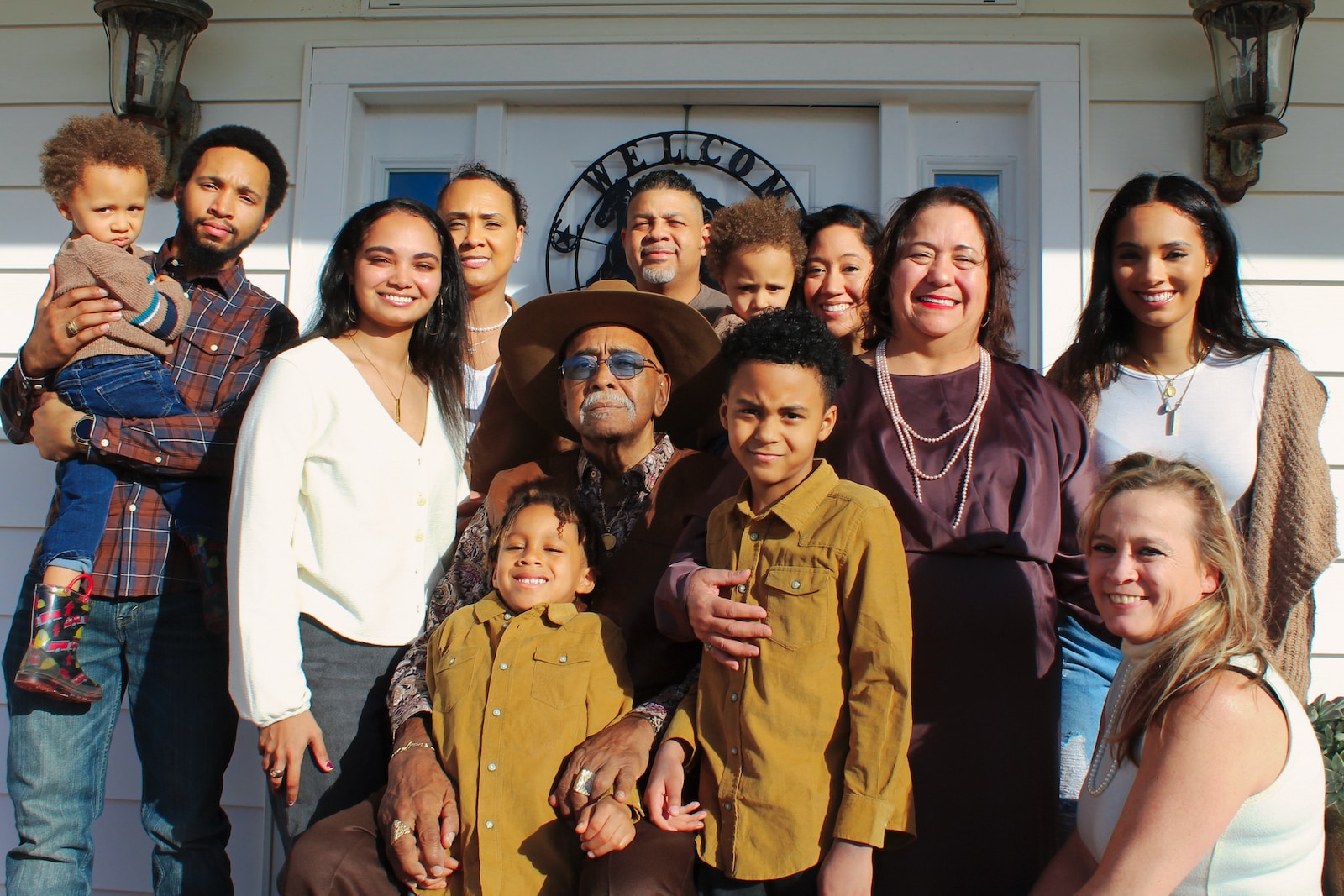Multigenerational living in retirement may have disappeared fr some, but its still alive and kicking in many places. Ever watched those old black and white movies where three or even four generations lived harmoniously under one roof?
Well, roll the credits because that’s not just a scene from yesteryears. Multigenerational living, a tradition as old as time, is making a modern comeback. And guess what? It could be the golden ticket to ensuring comfort, joy, and support during your retirement days.
Contents
- 1 Understanding the Multigenerational Shift
- 2 The Financial Upside
- 3 Emotional and Practical Support
- 4 Challenges? Of Course, There Are Some!
- 5 Preserving Independence
- 6 Making It Work: Communication is Key
- 7 Adapting the Living Space
- 8 Setting Financial Boundaries
- 9 Celebrating the Togetherness
- 10 Final Thoughts on Multigenerational Living In Retirement
- 11 FAQs
Understanding the Multigenerational Shift
Back in the day, hitting certain milestones like getting your first job or turning a specific age meant one thing: packing up and moving out. Independence was synonymous with having your own place. Fast forward to today, and the scene is a tad different.
Economic factors like soaring property prices, student loan debts, and unpredictable job markets are compelling many to revisit this concept of independence. But it’s not just finances driving this change.
There’s a renewed appreciation for family bonds, shared responsibilities, and the cultural richness of having multiple generations under one roof. This fusion of practicality with the profound emotional connect of family is pushing many to embrace multigenerational living, rewriting the narrative of modern households.
The Financial Upside
Ever split the bill at a restaurant? Remember how light that felt on your wallet? Now imagine that on a larger scale – home expenses, utilities, maybe even groceries. When multiple generations come together, it’s not just about sharing spaces, it’s also about pooling financial resources.
Retirees, often on a limited budget, can significantly benefit from this. Instead of struggling with escalating costs of living, they find themselves in a household where expenses are distributed. And it’s not just about splitting bills; it’s about collective financial growth. Perhaps there’s room for joint investments or saving up for larger family vacations. In an era where financial stability can seem elusive, especially for retirees, multigenerational living offers a promising silver lining.
Emotional and Practical Support
Do you recall those childhood tales, whispered by grandparents at bedtime? Or the joy of seeing a younger family member’s eyes light up as they grasp a concept you’ve explained? That’s multigenerational living for you. It’s like a constant exchange program where emotional bonds strengthen, and day-to-day hassles are eased.
Grandma becomes the default storyteller and caregiver for the little ones, while the tech-savvy teenager is on hand to help grandpa with the latest smartphone update. From sharing stories of the ‘good old days’ to demystifying the world of social media, these shared moments not only bridge the generational gap but also foster deep connections.
It’s a living environment where every day offers an opportunity to learn, share, and grow together. In essence, it’s the true embodiment of family.
Shared Responsibilities
Ever reminisce about the childhood days when Sunday meant a massive family clean-up? Everyone had a role, be it dusting, laundry, or the daunting task of organizing the garage. That’s the beauty of multigenerational living! The load lightens when spread across more hands.
Picture Grandma taking on gardening, lending her decades of green-thumbed experience to the backyard, while the youngsters take care of tech setups and heavy lifting. Maybe Mom’s cooking pairs with Dad’s handyman skills, ensuring a home-cooked meal in a well-maintained setting.
Not only does this division reduce the strain on any one individual, but it also instills a sense of teamwork and appreciation for each member’s unique contributions. It’s more than just task-sharing; it’s about creating a cohesive unit where everyone plays a part in the symphony of daily life.
Challenges? Of Course, There Are Some!
Remember those classic sitcom scenes where three generations end up in a comedic quarrel over something as trivial as the TV remote? As much as we chuckle, it mirrors a reality in multigenerational households. It’s a melting pot of diverse perspectives, preferences, and habits.
The youngsters might crave late-night gaming sessions, while the elders might prefer early morning tranquility. Dietary choices, music volumes, or even thermostat settings can spark debates. Privacy can sometimes feel compromised, and boundaries might occasionally blur.
However, with open dialogue, mutual respect, and a dash of compromise, these hurdles can transform into learning moments. After all, isn’t life about embracing the chaos and turning it into a harmonious melody?
Preserving Independence
Remember when you were a teenager, craving your own corner to just be? Or as an adult, needing a moment of solitude with a cup of coffee? That need for personal space and independence doesn’t dissipate, no matter the age. In a multigenerational household, it’s paramount.
Grandparents might treasure their morning rituals, parents their date nights, and teenagers their hangouts with friends. While it’s beautiful to have a bustling home filled with chatter and activity, it’s equally crucial to acknowledge the individual. Designating private spaces, respecting closed doors, and even scheduling ‘me-time’ can make all the difference.
By nurturing individual independence within the collective framework, the household thrives. After all, a tapestry is most beautiful when each thread maintains its unique color, right?
Making It Work: Communication is Key
Ever tried assembling a jigsaw puzzle without seeing the full picture? That’s what multigenerational living can feel like without clear communication. Just as each puzzle piece has its unique shape and place, every family member brings their own perspective and needs. So, how do you ensure these pieces fit harmoniously?
Open dialogues. Carve out time for regular family meetings – consider it a ‘family huddle’ where everyone gets to share their highs, lows, and everything in between. These gatherings can be spaces for voicing concerns, setting boundaries, and even celebrating small victories. Setting clear expectations is vital too.
Who handles which chore? How are expenses split? By fostering an environment of mutual respect and understanding, potential misunderstandings can be nipped in the bud. Remember, it’s not just about living together; it’s about thriving together. And what’s the magic glue? Communication, of course!
Adapting the Living Space
Ever tried fitting a round peg into a square hole? It’s a tad tricky. Similarly, cramming multiple generations under one roof without some adjustments can lead to friction. So, how can you make the space work for everyone? Start by considering privacy.
Perhaps a separate entrance for the young adults or a private annex for the grandparents could do the trick. Shared communal areas like the living room or kitchen can become hubs of family bonding, filled with laughter, stories, and shared meals. Maybe the basement can be converted into a recreational space or a quiet reading nook?
Storage is another aspect to ponder upon. With more people come more belongings, so innovative storage solutions can be a lifesaver. Think vertical storage, under-the-stairs cubbies, or even multi-purpose furniture. By adapting and reimagining the living space, you ensure each family member feels both a sense of belonging and independence.
Setting Financial Boundaries
Establishing well-defined financial boundaries is crucial in any relationship where money is a shared aspect. While the idea of pooling resources and sharing financial responsibilities is beneficial, it’s equally important to create clear guidelines and limits.
This not only ensures financial stability but also helps prevent potential future conflicts and resentment. Financial boundaries can encompass various aspects, such as individual spending allowances, savings goals, or decision-making processes related to significant expenses.
These boundaries offer a sense of security and clarity, allowing both partners to manage their finances while respecting each other’s autonomy. By openly discussing and setting these boundaries, couples can build a solid foundation for a healthy financial partnership, promoting transparency and understanding in their shared financial journey.
Celebrating the Togetherness
Celebrating togetherness is a vital aspect of any relationship, especially in the face of challenges and obstacles. While life may present its fair share of difficulties, it’s essential to recognize and cherish the moments of joy, shared memories, and collective celebrations that occur along the way.
These moments serve as the glue that binds a partnership, strengthening the emotional connection between individuals. Whether it’s commemorating milestones, sharing laughter over a shared joke, or simply enjoying the everyday moments together, celebrating togetherness fosters a sense of unity and appreciation.
These celebrations can be as grand as anniversary parties or as simple as a quiet dinner at home. Regardless of their scale, they remind us of the beauty of shared experiences and the bonds that make the journey of life truly meaningful.
Final Thoughts on Multigenerational Living In Retirement
In conclusion, multigenerational living in retirement can offer a cocoon of support, love, and shared responsibilities. While it’s not without its challenges, the benefits, both emotional and financial, can be immense. It’s a return to our roots, a nod to the days when extended families were the norm. In the ever-evolving landscape of modern living, perhaps, this old tradition has a new role to play.
FAQs
What is multigenerational living?
It refers to a household with two or more adult generations living together. This can include grandparents, parents, and children.
What are the financial benefits of such an arrangement in retirement?
Retirees can share financial burdens, from utilities to mortgages, making it economically viable.
Aren’t there any privacy concerns?
Yes, maintaining privacy can be a challenge, but with effective communication and a well-adapted living space, it can be managed.
How do we manage different generational opinions and potential conflicts?
Open dialogues, setting clear expectations, and regular family meetings can be instrumental.
Is this trend here to stay?
While it’s hard to predict the future, the emotional and financial benefits make it an appealing choice for many.







































